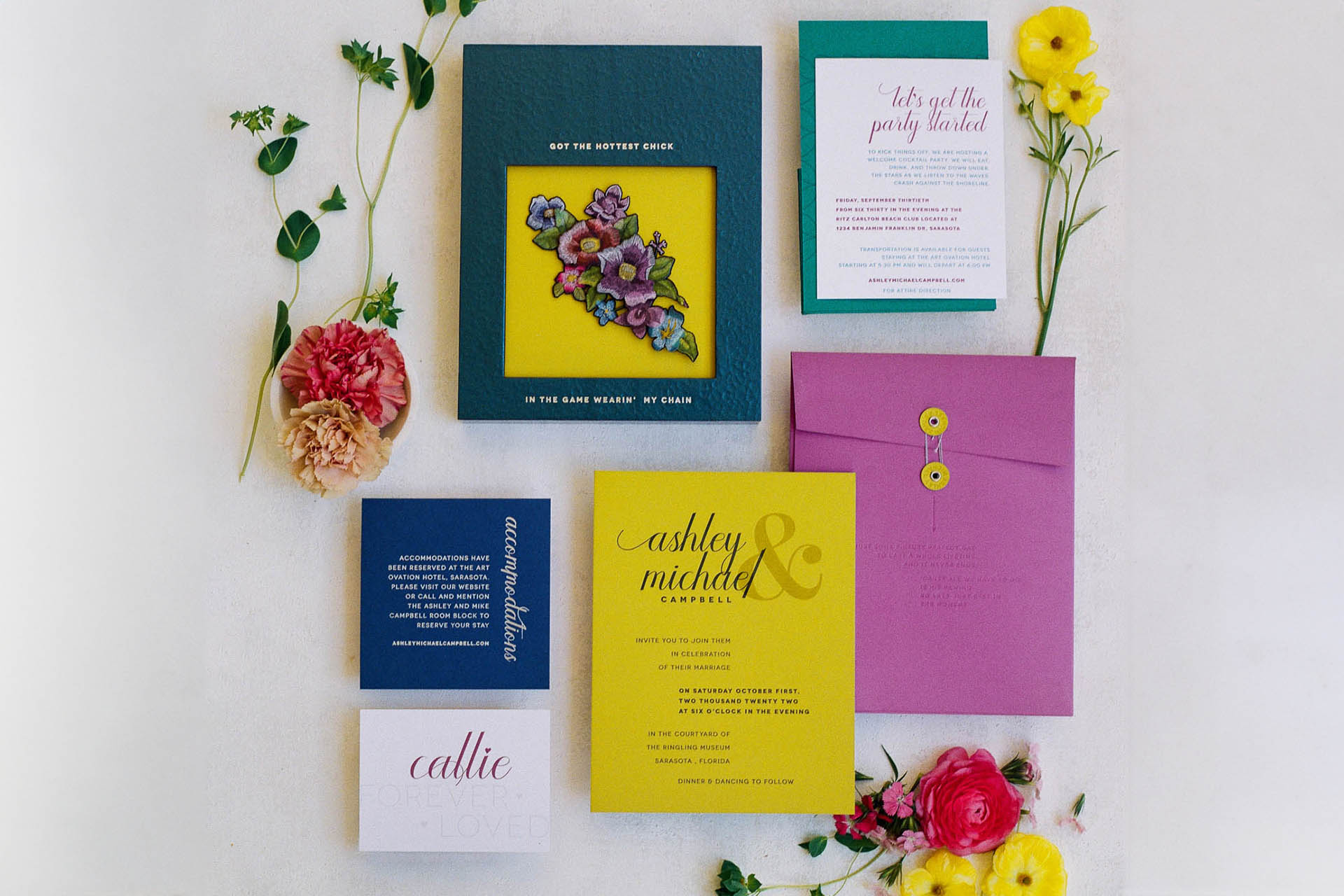An invitation is never just paper. It’s an invocation—for them, not for you.
I’m not sure whether or not this is a hot take, but:
The invitation isn’t for you.
It’s not for your mom, your planner, your executives, or even your Pinterest board.
It’s for the person holding it.
The invitation is the first moment your people get to feel what their experience of your event might be like. It’s a chance to shift their emotional state—to spark joy, curiosity, awe, wonder, nostalgia, or anticipation. When done right, it doesn’t just tell them what’s coming.
It changes how they show up for it.
I call what I make holy shit stationery for a reason. That phrase doesn’t describe the design style.
It describes the reaction.
The moment of pause. The catch in the throat. The widening of the eyes.
When someone opens it, looks up, and says:
“Holy shit… this is for me?”
But most invitations aren’t made this way.
Most are made to show off—to say “look how much I spent” or “look how stylish I am.”
The problem? That misses the whole point.
Because if the guest doesn’t feel seen, if they don’t feel something shift in them…
…it’s just expensive paper (or polymer, or wood, or, or, or…).
Designing for the recipient means thinking like them. Feeling what they feel.
It’s about stepping outside your own ego and stepping into their shoes.
Here’s how I think about your invitations:
1. Emotion First
What do we want them to feel the moment this arrives in their hands?
Surprise? Elegance? Edge? Mystery? Comfort?
That emotional fingerprint is the foundation.
2. Material as Meaning
Texture, weight, scent, sound—these aren’t surface-level details.
They’re signals.
A bespoke fabric box doesn’t say luxury.
It says intimacy.
A mirrored foil doesn’t say “cool.”
It says “this moment reflects you, too.”
3. Designing Time
An invitation doesn’t just communicate a date.
It begins the countdown.
It stretches time—it builds anticipation, nudges imagination, creates space for transformation.
It’s not a preview. It’s part of the experience.
When you start with the recipient in mind, everything changes.
Design becomes more than aesthetics—it becomes empathy made manifest.
It becomes a way of honoring your people.
Of saying: You matter enough for this to be unforgettable.
That’s what I mean when I say holy shit stationery.
It’s a shift.
It’s a story.
It’s a holy shit moment.
And that changes everything.


0 Comments